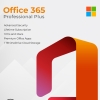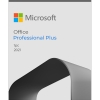In a world where our digital lives are expanding and evolving, the importance of staying vigilant against cybersecurity threats cannot be emphasized enough. With each passing day, cybercriminals are devising new methods to exploit vulnerabilities and gain unauthorized access to sensitive information. In this blog post, we’ll delve into the latest threats and trends in cybersecurity, equipping you with the knowledge needed to safeguard your digital presence.
The Rapidly Changing Cybersecurity Landscape
Cybersecurity is all about protecting our digital world, including computers, smartphones, networks, and the data they hold. As technology advances, cyber threats become more sophisticated and diverse. This is why staying informed about the latest trends and threats is crucial for everyone who uses the internet.
The Latest Threats in Cybersecurity
- Ransomware Attacks: Hackers encrypt your files and demand money to unlock them. These attacks can cripple businesses and cause massive financial losses.
- Phishing: Cybercriminals trick you into revealing personal information through seemingly legitimate emails or websites. They often use social engineering tactics to gain your trust.
- Malware: Malicious software, or malware, can infect your devices and steal sensitive information. It includes viruses, worms, spyware, and more.
- Data Breaches: Large-scale data breaches expose your personal information, such as passwords and credit card details. These breaches can lead to identity theft and financial fraud.
Emerging Trends in Cybersecurity
- Artificial Intelligence (AI) and Machine Learning: Both cybercriminals and security experts are leveraging AI and machine learning. While cybercriminals use AI to automate attacks, security professionals use it to detect and prevent threats more effectively.
- IoT Vulnerabilities: As the Internet of Things (IoT) grows, so does the potential for security breaches. Smart devices like cameras and thermostats can be hacked if not properly secured.
- Cloud Security: With more data stored in the cloud, ensuring its security is essential. Cloud security measures, like encryption and access controls, are becoming more important.
Protecting Yourself in the Digital Age
- Update Regularly: Keep your devices and software up to date to patch known vulnerabilities.
- Use Strong Passwords: Create unique passwords for each account and use a mix of letters, numbers, and symbols.
- Enable Two-Factor Authentication (2FA): This adds an extra layer of security by requiring a second form of verification.
- Educate Yourself: Stay informed about the latest threats and best practices. Regularly reading reliable sources can help you recognize and avoid potential dangers.
Conclusion
In a world where technology is an integral part of our lives, understanding the latest threats and trends in cybersecurity is essential. By staying informed and adopting security measures, you can significantly reduce your risk of falling victim to cyberattacks. Remember, being proactive and cautious in the digital realm is the key to protecting your personal information and ensuring a safer online experience.







